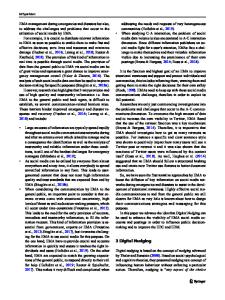Digital Communication in Medical Practice
In this current technological medical climate, it is vital for healthcare professionals to arm themselves and their patients with as much information as possible. Digital Communication in Medical Practice is a concise overview of the communication tools a
- PDF / 1,559,967 Bytes
- 178 Pages / 439.37 x 666.142 pts Page_size
- 57 Downloads / 314 Views
Kathryn J. Hannah Marion J. Ball Series Editors
For other titles published in this series, go to www.springer.com/series/1114
Nancy B. Finn • William F. Bria
Digital Communication in Medical Practice
Nancy B. Finn Communication Resources Needham, MA USA
William F. Bria Shriners Hospitals for Children 2900 Rocky Point Drive Tampa, FL USA
ISBN 978-1-84882-354-9 e-ISBN 978-1-84882-355-6 DOI: 10.1007/978-1-84882-355-6 British Library Cataloguing in Publication Data Library of Congress Control Number: 2008944093 © Springer-Verlag London Limited 2009 Apart from any fair dealing for the purposes of research or private study, or criticism or review, as permitted under the Copyright, Designs and Patents Act 1988, this publication may only be reproduced, stored or transmitted, in any form or by any means, with the prior permission in writing of the publishers, or in the case of reprographic reproduction in accordance with the terms of licences issued by the Copyright Licensing Agency. Enquiries concerning reproduction outside those terms should be sent to the publishers. The use of registered names, trademarks, etc. in this publication does not imply, even in the absence of a specific statement, that such names are exempt from the relevant laws and regulations and therefore free for general use. Product liability: The publisher can give no guarantee for information about drug dosage and application thereof contained in this book. In every individual case the respective user must check its accuracy by consulting other pharmaceutical literature. Printed on acid-free paper Springer London is part of Springer Science + Business Media (www.springer.com)
To our children and grandchildren who are the future: Jeffrey, Glenn, Alex, Marc, David, Ivy, Gefen and Sydney Finn, Bill and James Bria
Foreword
Enabling the Complexity of Communication in Health Care The cost, quality, safety, and access problems of healthcare are well known. These problems are based in and exacerbated by the complexity of healthcare. The knowledge domain of medicine is vast and evolves rapidly. Patients and providers have an asymmetry of knowledge and experience. Patients with complex acute problems and multiple chronic disease will be seen by many providers within a short period of time and will be undergoing several, parallel treatments. The delivery system is highly fragmented and dominated by small physician groups and hospitals. Reimbursement mechanisms do not sufficiently reward care coordination and care that is safe, efficient, and uses the best medical evidence. Managed care contract provisions can fill volumes. Over the years we have learned that information technology can be applied to help address many of the challenges faced by healthcare. We have also learned that these gains are not an automatic result of application implementation. Systems design must be thoughtful. Care processes and workflow must be skillfully accommodated and changed. Training must be provided on an ongoing basis. Means must exist for the provider to cover the in
Data Loading...











